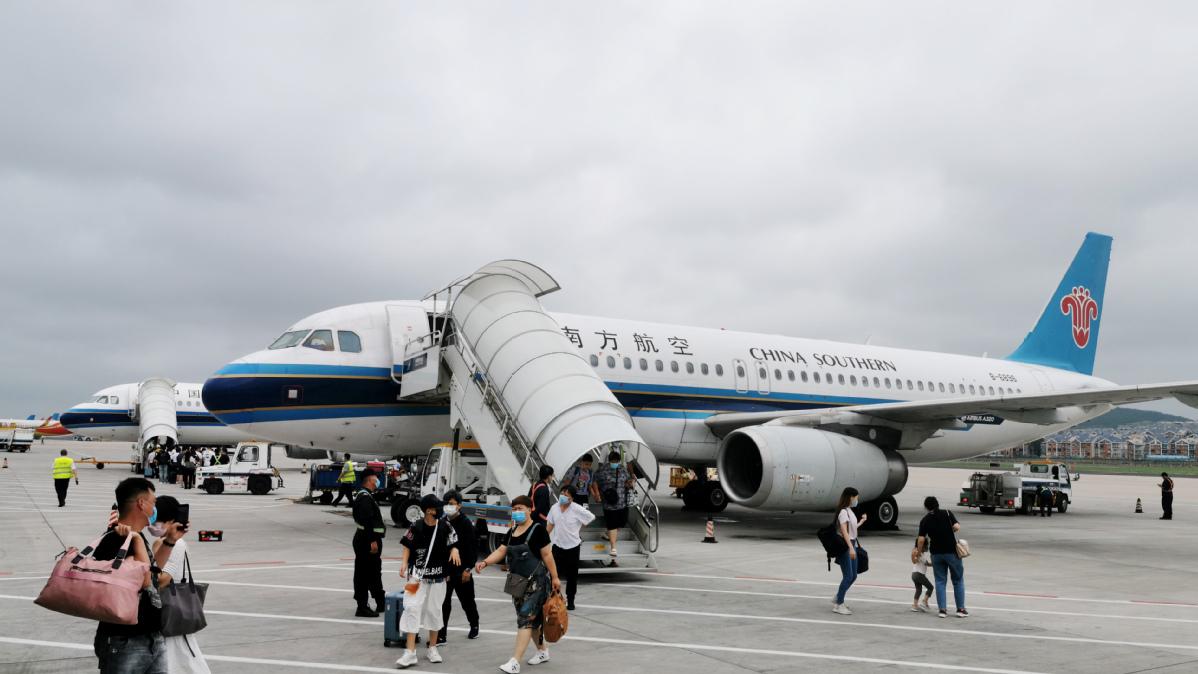China’s civil aviation industry will grow smarter with the help of new-generation digital technologies, per a roadmap issued by the Civil Aviation Administration of China (CAAC). Solid digital transformation progress should be made by 2025, with the efficiency of security checks rising 30% from 2020, according to the roadmap. More than 90% of airport trips will see paperless services, and luggage transfers between airports will be facilitated by 2025.
A total of 234 airports were capable of providing passengers with paperless journeys by introducing e-boarding and e-security checks, allowing passengers to travel with only their identification cards and eliminating the need for conventional paper boarding tickets. By the end of 2021, 842 aircraft in China’s civil aviation fleet were capable of providing inflight Wi-Fi services.
The booming digitalisation trend is driving China’s endeavour of building a smart civil aviation industry to boost sustainable development. To give full play to digital technologies, civil aviation authorities will integrate the “smart” concept and technologies into industry growth. The move to create smart civil aviation is expected to provide new room for industry development and drive high-quality and high-efficiency growth of this sector, with digitalisation as the key driving force.
The aviation industry generates and processes massive amounts of data along its long industrial chain, making it naturally more adaptive to the wave of digitization. The application of digital technologies is of great importance to ensuring safety, efficiency and sustainable growth.

The CAAC is committed to making the entire industry smart by integrating new-generation digital technologies into the whole industry — from air travel, air logistics and customs clearance, to the industry’s operation and supervision, according to the CAAC’s smart aviation strategy. The CAAC is actively promoting the radio frequency identification (RFID) technology in luggage tracking, automatic luggage check-in, facial recognition, and intelligent inquiry services, among others.
The CAAC is also encouraging innovation in related technologies and drafting tech roadmaps in fields such as in-flight internet surfing on commercial aeroplanes. air passengers’ in-flight internet surfing experience will be greatly enhanced, from previous cabin local networks to broadband connectivity with much higher speed.
The CAAC’s strategy in building a smart civil aviation industry is expected to boost the sector’s further recovery from the COVID-19 impact, and open new space for industry players. Digital technologies will greatly boost the profitability and market performance of airlines, by saving fuel and personnel, cutting operation and maintenance costs, and enhancing safety and passenger experience.
As reported by OpenGov Asia, China is looking to gain a competitive edge in the transportation sector during the 14th Five-Year Plan period (2021-25) amid a larger drive to foster green, smart and high-quality development over the long run. There are imbalances and inadequacies in the development of comprehensive transportation, hence it is urgent to promote high-quality transportation development.
By 2025, the comprehensive transportation system will witness integrated development, substantial strides in green and smart development, an improved facility network and more effective transportation services. More than 95% of cities with a population of over 500,000 will be covered by the high-speed railway network, with trains having maximum speeds of 250 kilometres per hour and faster. By 2035, a convenient, cost-effective, green, smart, advanced and reliable modern national comprehensive transportation network will be completed.









